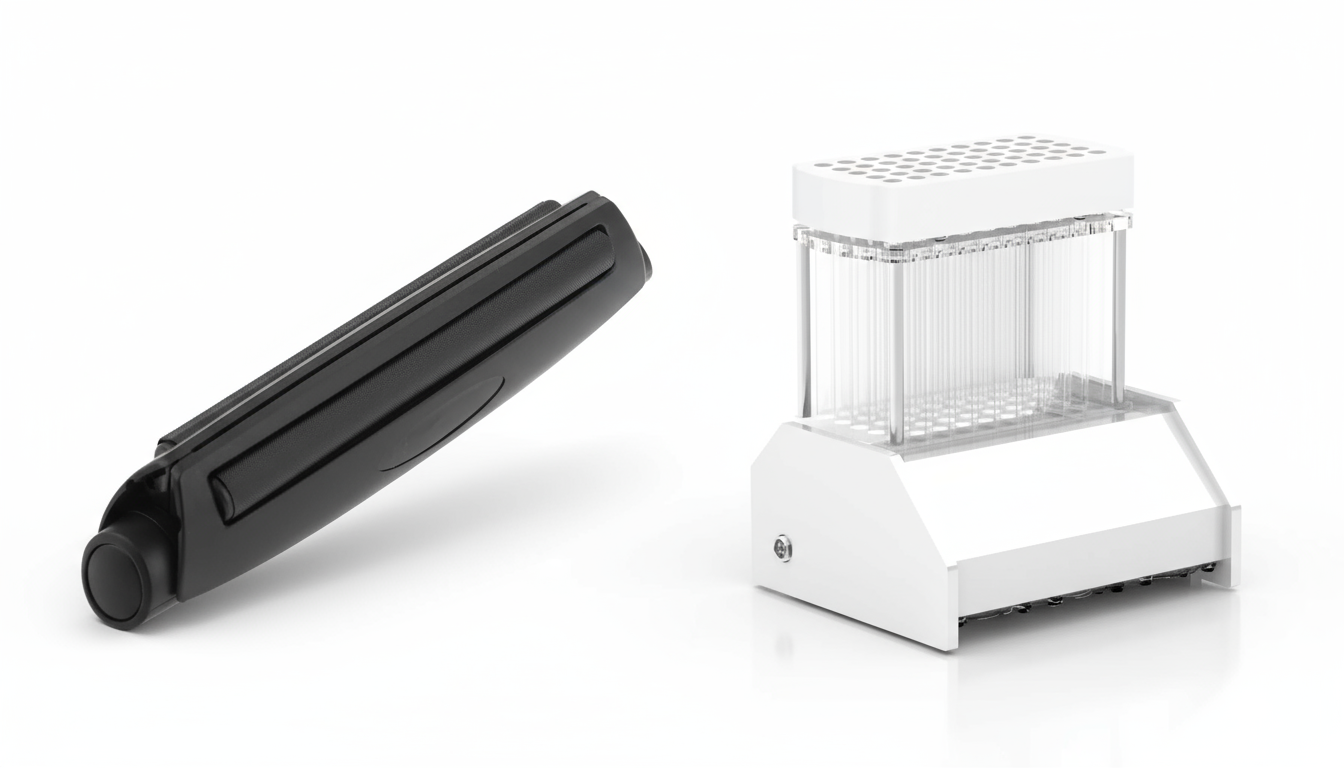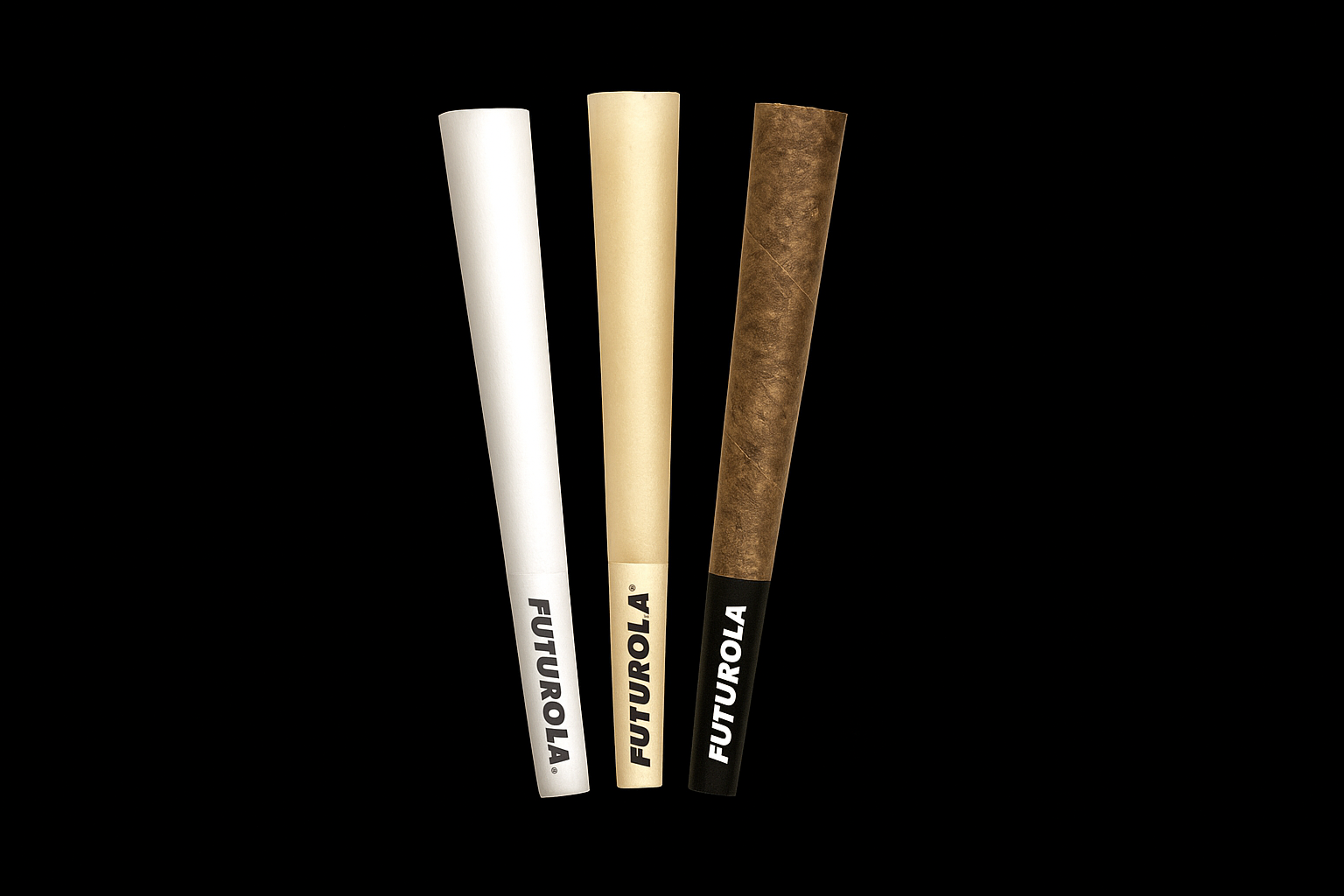You bought a cone roller to make filling easier. Your cones still channel unevenly. They feel loose or too tight. They look unprofessional.
The device isn't the problem. How are you using it?
Cone rollers require proper technique to deliver consistent results. Most mistakes come from treating all devices the same way or assuming the machine does everything automatically. This guide addresses common mistakes associated with cone roller devices, including manual, electric, and industrial models.
Getting the technique right matters more than device cost. A cheap device used properly outperforms an expensive device used incorrectly. Many of these mistakes disappear once you understand basic cone rolling tools and techniques. Understanding these mistakes can transform your results, regardless of the equipment.
Disclaimer: Device specifications, techniques, and settings vary by manufacturer and model. Always verify with your specific device instructions.
Using the Wrong Cone Size for Your Device
Cone size compatibility is the #1 mistake users make. They purchase cones that appear suitable but don't meet their device specifications. Here's why sizing matters and how to get it right.
Every cone roller device has specific size compatibility ranges that determine which cone dimensions (diameter, length, and base width) work optimally with its mechanical filling mechanisms. Using cones outside the device’s spec can increase the risk of jamming, paper damage, or inconsistent fills.
How to Match Cone Dimensions to Device Capacity
Measure cone opening diameter, cone length, and filter tip diameter (commonly ~5–6 mm for standard cones). Match these to the device’s spec sheet.
Test fit before bulk use. Insert an empty cone into your device without material. The cone should sit securely without forcing, inserting with gentle pressure only, requiring no compression or deformation to fit the loading chamber.
For multi-cone systems, all positions must accommodate your chosen cone size. Check each loading station with your test cone.
Skipping Material Preparation Steps
Material preparation makes or breaks your results. Cone rollers don't eliminate the need for proper material preparation. They actually amplify preparation errors by processing material mechanically without the adaptive adjustments possible with manual hand-rolling techniques.
Material that's too fine (particle size below 0.5mm resembling powder) clogs devices and creates airflow problems by compacting excessively and blocking air channels that enable proper draw resistance. Material that's too coarse distributes unevenly and creates gaps in the fill.
Optimal material consistency for cone roller devices: fluffy, uniform texture without dust or chunks. Specifically, medium-grind particles between 1-3mm that compress evenly while maintaining airflow passages, similar in appearance and texture to coarsely ground black pepper.
Achieving the Right Material Consistency
Visual check: properly prepared material looks fluffy and consistent. Individual particles are clearly visible and separated rather than clumped together, with uniform coloration indicating even processing and no dark wet patches suggesting excessive moisture.
Material particles should be of a similar size, with 80-90% of particles falling within a 1mm size variation range when visually inspected, creating the uniform distribution needed for even cone filling.
The material should compress slightly under gentle finger pressure, then spring back when released. This elastic response indicates an optimal moisture content of around 58-62% relative humidity, where the material retains its structure without excessive dryness or moisture-induced clumping.
Moisture Content Effects on Device Performance
Too dry (below 50% relative humidity): The material creates dust particles smaller than 0.3mm that infiltrate device mechanisms, coat vibration motors, settle in rotation bearings, and accumulate in filling chambers, reducing mechanical efficiency and requiring frequent cleaning.
Too moist (above 65% relative humidity): Excess moisture can cause clumping and may increase the risk of residue buildup. Keep devices in dry, temperature-stable environments per the manufacturer’s guidance.
Overfilling or Underfilling Your Device
Device capacity markings are in place for performance reasons. They're engineered based on optimal material volume-to-compression ratios, motor torque limitations, and chamber geometry, which together determine the maximum efficient processing capacity without mechanical strain or quality degradation.
Overfilling creates pressure exceeding design specifications (typically 20-30% above marked capacity) that can damage manual device components through stress fractures in plastic housings or strain electric device motors by increasing rotational resistance beyond rated torque limits, reducing motor lifespan by 40-60%.
Underfilling wastes device capacity and creates loose, unstable cones. With manual devices, insufficient material doesn't engage the rolling mechanism properly.
Visual fill line markings and tactile resistance feedback during material loading indicators show proper fill levels, with optimal loading producing smooth, even material distribution visible across the loading chamber surface and gentle resistance when pressing material lightly with a fingertip.
Reading Device Capacity Indicators Accurately
Look for fill lines (typically engraved or printed horizontal marks), maximum capacity marks (often labeled "MAX" or indicated with red coloring), or zone indicators (shaded regions showing optimal fill range) on your device's loading chamber, material reservoir, or cone positioning area.
Multi-cone devices, such as Knockbox systems, that process 50-500 cones simultaneously require even loading across all positions. Material variation between cone positions should be kept within 5-10% by weight to ensure uniform compression, consistent density distribution, and synchronized processing across the entire batch.
Adjusting Fill Amounts for Different Material Densities
Fluffier grinds often need a bit more volume to achieve target pack density; denser grinds need less. Adjust by small increments and test.
Improper Manual Device Technique
Manual thumb rollers may not be as simple as they appear. They require specific rolling motion (bidirectional rotation patterns), pressure application (typically 2-4 pounds of force distributed evenly across both thumbs), and timing (15-30 seconds of active rolling for standard-size cones) to produce uniformly compressed, evenly distributed fills.
Rolling too fast (exceeding 2-3 rotations per second) creates an uneven distribution, as the material doesn't have sufficient time to settle and redistribute during each rotation. This results in dense spots where the rolling pressure is concentrated and loose areas where the material has shifted away. These technique fundamentals are essential for achieving tight, even cone rolls regardless of your device type.
Proper manual rolling technique: smooth, consistent rolling motion at approximately 1-2 rotations per second with even pressure of 2-4 pounds force across both thumbs, creating rhythmic, controlled compression that gradually shapes material without crushing particles or creating density variations across the cone length.
The Rolling Motion That Actually Works
Thumb positioning: Place thumbs on the rolling surface with even pressure. Position the thumb pads (not the tips) centrally on the rolling mechanism with approximately a 45-degree angle of contact, distributing force across the broad thumb surface rather than concentrating pressure at minor contact points.
Motion pattern: roll forward 3-5 rotations (counting each complete 360-degree cycle), then reverse direction for 3-5 rotations backward, creating bidirectional material compression that eliminates gaps and distributes particles evenly throughout the cone chamber.
Pressure adjustment: material should compress gradually. Should feel resistance, but not extreme force. If you're straining, you're doing it wrong.
Ignoring Electric Device Settings and Maintenance
Electric cone rollers have adjustable settings. These typically include vibration intensity (measured in hertz or on a scale of 1-10), cycle duration (20-90 seconds), and rotation speed (for rotary models, 10-60 RPM). They require optimization for different material consistencies, moisture levels, and cone sizes.
Vibration intensity (typically ranging from 80 to 200 Hz), cycle duration (automated processing time from 30 to 90 seconds), and rotation speed (for rotary filling mechanisms, 15-60 revolutions per minute) are often overlooked by most users. They never optimize beyond factory default settings despite 30-50% performance improvements possible through material-specific calibration. Understanding whether electric cone rollers are more efficient than manual alternatives helps determine which optimization efforts provide the best return on investment.
Battery management mistakes plague cordless devices. This includes charging to only 50-70% capacity, regularly depleting batteries below 10%, and storing them uncharged for extended periods. These collectively reduce the lifespan of lithium-ion batteries from 800-1000 charge cycles to 300-500 cycles, effectively halving device operational longevity.
Cleaning neglect kills performance gradually. Residue accumulation reduces vibration intensity by 20-40% over 30-50 uses, increases motor strain by 25-35%, and eventually causes mechanical failure after 100-200 uncleaned sessions compared to 500-1000+ sessions with proper maintenance.
Optimizing Settings for Your Material and Cone Size
Start with manufacturer recommendations. These are typically documented in device manuals as baseline settings, such as "Medium intensity for standard cones with medium-grind material." Then, adjust based on your specific results by incrementally changing one variable at a time, while documenting the outcomes.
Lower intensity (reducing vibration frequency by 20-30% or setting the intensity dial to levels 2-4 on a 10-point scale) is recommended for smaller cones (84mm or shorter lengths with diameters under 8mm) to prevent over-compression that restricts airflow in limited chamber volumes.
Higher intensity for larger cones or denser material. Test incrementally. Change one setting at a time. Evaluate results.
Battery Care That Extends Device Lifespan
Charge fully before first use. Complete an initial 8-12 hour charge cycle that calibrates battery management systems and conditions lithium-ion cells for optimal performance, establishing the charge capacity baseline that devices use for battery level indicators throughout operational life.
Avoid complete discharge regularly. Never allow battery level to drop below 15-20% capacity. Lithium-ion batteries experience accelerated degradation when deeply discharged, with each full discharge cycle causing approximately twice the wear of a partial discharge from 80% to 30%.
Storage matters for cordless devices. The store charged even when it was not used for weeks. Store in moderate temperatures.
Cleaning Schedules That Maintain Performance
Personal users: clean after every 10-20 uses, minimum. This translates to weekly cleaning for users filling 2-3 cones daily, or monthly cleaning for occasional users filling 3-5 cones weekly. More frequent cleaning is required when using sticky, resinous materials that leave heavier residues.
Commercial operations: daily cleaning for high-volume devices processing 100+ cones per day. Implement end-of-shift maintenance protocols that include residue removal, inspection of mechanical components, and verification of proper operation before the next production cycle.
Cleaning method: isopropyl alcohol at a 90-99% concentration, and soft brushes are suitable for most material contact points. Be careful around electric components. Complete drying before next use prevents electrical problems.
Rushing Through the Filling Process
Cone rollers speed up the process compared to hand-rolling. They reduce filling time from 3-5 minutes per cone manually to 30-90 seconds per cone with devices, representing a 60-80% time savings. However, they still require patience for optimal results, as rushing introduces errors that negate the efficiency gains.
Sequential mistakes happen when rushing. This includes improper material loading (insufficient settling time), inadequate device engagement (interrupting processing cycles), and premature cone removal (extracting before compression completes). Each rushed step creates cumulative quality degradation that compounds into 40-70% failure rates versus under 5% failure rates with proper pacing.
Processing Times That Deliver Consistent Results
Manual devices: 15-30 seconds of active rolling typically produce good results for standard cones, with 15 seconds representing the minimum time for basic compression and 30 seconds allowing for thorough, bidirectional material distribution that maximizes consistency and eliminates gaps.
Electric devices: let the full cycle complete. Respect programmed processing durations typically ranging from 30 to 90 seconds that engineers determined through testing to achieve optimal material compression, vibration settling, and density consistency, rather than interrupting based on premature visual assessment.
Don't interrupt based on appearance. The device knows its optimal processing duration.
Using Poor Quality or Damaged Cones
Cone roller devices can't compensate for low-quality cone materials. This includes thin papers (with a thickness below 10 g/m²), weak adhesive formulations (water-soluble glues that fail under 50% humidity), or irregular cone dimensions (diameter variations exceeding ±0.5mm). Mechanical filling processes expose material weaknesses that hand-rolling techniques can work around through adaptive pressure adjustments.
Common cone quality issues: uneven paper thickness (variations exceeding 2 g/m² within single cones) causes tears during filling, as thin sections (under 11 g/m²) rupture under 3-5 pounds of device compression force, while thick sections (over 14 g/m²) resist proper shaping, creating stress concentrations that propagate as paper failures.
Weak adhesives (typically low-grade water-soluble gum arabic formulations containing under 40% adhesive solids) fail during handling, separating under normal 1-2 pound grip pressure or humidity exposure above 60% relative humidity, which causes cone unraveling during filling or post-sealing storage.
Quality Indicators Before Loading Cones
Visual inspection: examine each cone before filling. Conduct a 5-second quality check that surveys the entire cone surface under adequate lighting, looking for paper discoloration (indicating moisture damage), surface irregularities (signaling manufacturing defects), or adhesive line gaps (suggesting bonding failures).
Check the glue line (the longitudinal seam where overlapping paper edges bond) for complete adhesion by gently flexing the cone while observing the seam for any separation, gaps wider than 0.2mm, or lifting edges that indicate inadequate bonding strength below 0.5 pounds per linear inch.
Storage Conditions That Preserve Cone Quality
Humidity control: store cones in low-humidity environments. Maintain a relative humidity of 35-50% by using desiccant packs, humidity-controlled storage rooms, or sealed containers with moisture-absorbing materials. This prevents paper from absorbing atmospheric moisture, which can weaken structural integrity and degrade adhesive bonding.
Temperature stability: moderate room temperature of 60-75°F (15-24°C) is ideal. Avoid temperature extremes below 50°F, where papers become brittle, and above 85°F, where adhesives soften and paper fibers degrade. Maintain temperature fluctuations within 10°F daily to prevent condensation cycles that introduce moisture.
Failing to Test Before Sealing
The dry test pull (drawing air through the filled but unsealed cone before sealing) detects problems. At the same time, they can still be corrected through material redistribution, density adjustment, or complete repacking, thereby preventing the discovery of blockages, runs, or uneven channeling only after sealing, when correction becomes virtually impossible without destroying the cone.
What to test: Airflow resistance should be smooth, without being blocked or whistling. Specifically, gentle inhalation should produce steady resistance similar to drawing air through a standard drinking straw (approximately 0.5-1.0 inches of water column pressure). No sudden increases in resistance should indicate blockages, and high-pitched whistling sounds should suggest air channel formation through material gaps.
What to Feel and Listen For During Test Pulls
Draw air through the unfilled end (the open tip opposite the filter base) gently, using approximately the same force as a normal breathing inhalation, while avoiding excessive suction that might collapse weak paper or redistribute loosely packed material.
Resistance should be moderate and consistent throughout the draw. Maintain steady back-pressure from the beginning to the end of inhalation without progressive tightening (indicating progressive compression or material shift) or sudden loosening (suggesting structural gaps or inconsistent density distribution).
Listen for whistling or rushing air sounds. These indicate air channels where material is missing or paper has holes.
Quick Corrections You Can Make Before Sealing
Overpacked sections: Use a thin tool to carefully remove some material from dense areas. Redistribute it to other areas or remove it entirely. Test again after adjustment.
Underpacked sections: add small amounts of material to loose areas. Use a thin tamping tool to gently compress the mixture. Test again to verify improved airflow.
Device Maintenance and Care
Cone roller devices accumulate residue (sticky trichome deposits), debris (paper fragments from torn cones), and material buildup (compressed herb particles in crevices and mechanisms) that collectively degrade performance by 30-50% over 20-40 uncleaned uses, increasing motor strain, reducing vibration effectiveness, and eventually causing mechanical failure.
What accumulates: material dust (particles under 0.5mm that settle in enclosed spaces), trichome residue (sticky resinous compounds that coat surfaces and harden over time), paper fragments (torn pieces from damaged cones that jam moving parts), and environmental debris (lint, hair, and airborne particles) collect in device mechanisms including vibration chambers, rotation bearings, motor housings, and material contact surfaces.
Cleaning Techniques for Different Device Types
Manual devices: disassemble according to instructions. Typically, separate rolling plates, remove thumb pads, and access internal cavities where material accumulates. Then, clean all material contact surfaces with isopropyl alcohol at a concentration of 90-99%, applying it with cotton swabs, soft-bristled brushes, or lint-free cloths.
Electric devices: Never submerge in water or cleaning solutions unless explicitly labeled as waterproof. Typically indicated by IPX7 or higher ratings on device specifications. Water infiltration damages electronic control boards, corrodes motor windings, and shorts battery connections, often resulting in permanent device failure that necessitates complete replacement.
Clean exterior surfaces and accessible material contact points with alcohol-dampened cloth. Use cotton swabs for tight spaces. Air dry thoroughly.
Storage Practices That Extend Device Life
Clean before storage every time. Storing devices with residue creates hardened buildup that's difficult to remove later. Material left in devices attracts moisture, which can create corrosion.
Store in dry, moderate-temperature locations. Avoid basements, attics, or vehicles where humidity and temperature fluctuate wildly. Protective storage containers prevent physical damage and dust accumulation.
Misunderstanding Multi-Cone Device Operations
Multi-cone systems work differently from single-cone devices. Devices that fill multiple cones simultaneously (like Knockbox Series systems capable of processing 50-500 cones per production cycle) have unique operational requirements distinct from single-cone device operation, including synchronized batch loading, coordinated compression timing, uniform material distribution across all positions, and quality control protocols that verify consistency within and between production runs.
Even loading requirement: multi-cone devices need consistent loading across all cone positions. Maintain material weight variation under 5% between any two cone positions (for example, ±0.1g variation when filling 2.0g cones) to ensure uniform compression force distribution, synchronized processing completion, and consistent product density across the entire batch.
One position loaded heavily (exceeding target weight by 15-20%) and another lightly (falling 15-20% below target) produces inconsistent product, with dense, hard-to-draw cones from overfilled positions and loose, fast-consuming cones from underfilled positions, resulting in customer complaints about quality variation within supposedly identical product batches.
Even Loading Across Multiple Positions
Measure material amounts carefully. Use consistent scoops or measuring tools for each position. Eyeballing amounts creates variation that shows in the final results.
Visual verification before processing: scan all cone positions quickly. Material levels should look similar across all positions. Obvious differences need correction before starting the device.
Systematic loading approach: develop a consistent pattern for loading positions. Left to right, top to bottom, whatever works for you. Consistent patterns reduce missed positions and improve loading consistency.
Expecting Devices to Compensate for Technique
The fundamental misunderstanding ruins many users' results. Cone roller devices are precision tools that amplify good technique by mechanizing successful processes and replicating them consistently, and expose bad technique by reproducing errors systematically across multiple cones, turning occasional hand-rolling mistakes into repeated, predictable failures that compound at production scale.
Automated features handle specific tasks. This includes mechanical compression (vibration settling or rotary tamping), timing control (programmed cycle durations), and consistency maintenance (uniform force application). But they cannot compensate for fundamental errors in material preparation, cone selection, or loading procedures that occur before automation begins.
The device does what you tell it to do with what you've provided. It executes programmed operations with the exact material characteristics, cone quality, and loading configuration presented, lacking adaptive intelligence to recognize suboptimal inputs, such as improperly ground material (too fine or coarse), moisture-damaged cones (weakened paper), or incorrect loading (uneven distribution), and adjust processing accordingly.
Technique Mistakes That Look Like Device Problems
Inconsistent results despite 'doing everything the same' usually mean your technique has variation you don't notice. This includes grinding pressure differences creating 10-15% particle size variation, material loading sequence changes affecting distribution, humidity fluctuations of 5-10% altering material behavior, or handling technique variations applying different compression forces across filling sessions.
Device 'losing power' over time (manifesting as reduced vibration intensity, slower rotation speeds, or decreased compression force) often means cleaning is needed to remove accumulated residue that creates 20-30% additional mechanical resistance, increases motor load by 25-40%, and reduces electrical efficiency by obstructing moving components rather than indicating actual motor degradation or battery failure.
Ignoring Manufacturer Instructions and Recommendations
Device manufacturers provide specific instructions based on engineering knowledge and testing. Ignoring these guidelines leads to predictable problems. Yet users skip instructions constantly.
Common areas where users deviate from instructions: cleaning procedures, compatible cone sizes, material preparation recommendations, operating settings, maintenance schedules, and safety precautions. Each deviation increases problem likelihood.
Warranty implications matter financially. Many devices void their warranties when users operate outside of the documented guidelines. Ignoring instructions can make expensive devices unsupported if problems develop.
Critical Instructions Users Often Ignore
Cleaning frequency recommendations: manufacturers specify cleaning intervals based on testing. Users often skip these, cleaning only when noticeable buildup appears. Following recommended schedules prevents performance degradation.
Compatible cone specifications: manufacturers list compatible sizes and types for good reasons. Using incompatible cones creates problems. This information prevents wasted money on the wrong inventory.
Initial setup procedures: Many devices require a specific first-use setup. Calibration, battery conditioning, or component assembly. Skipping these steps can affect device performance throughout its life.
Getting Better Results from Your Cone Roller
Most cone roller problems stem from user mistakes, not device deficiencies. Understanding and avoiding these common errors transforms results dramatically.
Start with proper material preparation and cone selection. These are foundational. Master basic device operation next. Maintain devices properly for longevity. Most users see dramatic improvement by addressing just 2-3 of their primary mistakes.
Commercial operations need a systematic approach through operator training, maintenance schedules, and quality control protocols. Small operational improvements compound into significant gains in production efficiency.
Explore Futurola's comprehensive range, from personal cone rollers to industrial Knockbox Series systems, backed by Amsterdam's rich rolling innovation heritage and over 25 years of manufacturing expertise. For businesses, free consultation services assess production optimization needs and proper device selection.
This guidance reflects general best practices and should not replace manufacturer-specific instructions. Always consult your device documentation and manufacturer support for specific operational guidance.





LEAVE A COMMENT
All comments are moderated before being published.
This site is protected by hCaptcha and the hCaptcha Privacy Policy and Terms of Service apply.